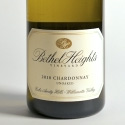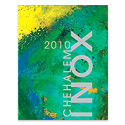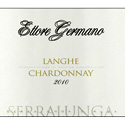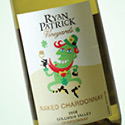Let’s take a closer look at unoaked chardonnay with its crisp and fruity character and learn why this style of chardonnay is developing a following. Discover the origin of ‘no oak’ chardonnay and who out there are great unoaked chardonnays. When looking for an unoaked chardonnay, look for these terms: ‘inox,’ ‘no oak,’ ‘sans chêne’ (France), and ‘acero’ (Spain).

Unoaked Chardonnay
Imagine a chardonnay with no butter, no vanilla and no cream. Forget lattes, cappuccinos and all the creamy business… we just want black coffee. For those who’ve elevated their wine tasting chops to something beyond milk fat, unoaked chardonnay sounds pretty compelling. There’s a couple of other things that make unoaked chardonnay delicious, sustainable and even technically more affordable than the oaked version. Once you read the factoids you can delve into the list of worthy no oak chardonnays and get your lips wet.

Not Your Auntie’s Chardonnay
A lil’ history Unoaked chardonnay was popularized by Chablis, a region about 80 miles Northwest of Dijon, France in Burgundy. Since the wines from Chablis traditionally are made with stainless steel, concrete or neutral oak, they do not have the butter-cream style (the one that Auntie loves). Chablis popularized this style and soon everyone around the world started labeling their no-oak chardonnays with the word “Chablis” until France complained. Unoaked chardonnay tastes only of the varietal characteristics of chardonnay which are green apple, lemon and sometimes pineapple with a long tingly finish.
Malolactic Fermentation Definition Simplified
What is MLF and how does it affect chardonnay? Sometimes wine producers put chardonnay through malolactic fermentation (happens in tank after the first fermentation) which alters the acids in the wine from the harsher malic acid (same acids found in green apples) to oilier lactic acid (a bacteria that is more common in sour cream). What’s important to note is that not all unoaked chardonnays go through MLF whereas most oaked chardonnays do, so it’s hard to tell the difference between the oily texture of malo versus the buttery-vanilla flavor of oak.
No Oak Chardonnay is Cheaper to Produce
Yep. It’s true. Take out the cost of paying for and shipping new oak barrels all over the world, year in and year out, and winemakers have a cheaper long-term solution. Thus, a lot of unoaked wines tend to fly into the marketplace at a much more affordable price point (and more sustainable).
Good Unoaked Chardonnay
This is a list of wines that I’ve tried in the last year that are 100% unoaked and 100% approved to be drinkable.
Golden apples, baked pears and figs… no need to say more, you’re probably already drooling out of both sides of your mouth. It’s Fruit-Forward. Unfortunately Bethel Heights’ unoaked version is not as well distributed, but you can find it for $18 on bethelheights.com
Super crisp, dry and tasting of lemons: this is a simple wine. Domaine de Bernier is NOT Fruit Forward. It hails from Loire Valley of France which is usually known for its sauvignon blanc and chenin blanc. It’s cheap and very easy to drink lots at $7 on klwines.com
This was one of the first unoaked American chardonnays I tried and I was delighted by the massive floral character as well as the white peach notes in this wine. It’s just plain yummy and Fruit-Forward. At around $16 on wine.com it’s on the bigger end of cheap white wines.
In a region known for Barolo it’s surprising to find chardonnay. With a tiny plot of chardonnay, Germano is fermenting in stainless steel tanks but still producing a wine with tarragon and orange-like aromas and a creamy texture due to malolactic fermentation. We found it at winelibrary.com for around $18
This lil’ guy is available at Trader Joes. It has pineapple and yellow apple flavors and is Fruit-Forward. The guys at the Ryan Patrick website don’t take this wine too seriously and neither should you. However at around $6, it’s quite a bit better than its California brethren in the same boat.





